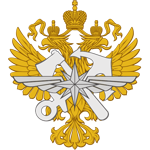The author is to fill the application for the publication with personal information:
Requirements for the text of the articles
Submitted papers must be original and not previously published in other magazines. The articles should be relevant, possess novelty, contain the findings of the study, as well as conforming to the following design rules (mentioned below). In case of improper design of the article, it is sent to the author for further revision.
The article is submitted in electronic form in Microsoft Word format by e-mail to:
albinadg@mail.ru.
The Editorial Address: 127994, Moscow, Obraztsova str., house 9/9, academic building 6.
The volume of the articles - from 20 thousand to 40 thousand characters (0.5-1.1 conditional printed sheet);
the volume of the reviews, as well as summaries of foreign legislation - up to 20 thousand characters (0.5 conditional printed sheet).
When typing, you must use the font "Times New Roman". The font size for the main text of the articles is 14. The footnotes in the text are given in [square brackets], their numbering should correspond to the reference list, placed at the end of the article in an alphabetical order; the references to comments are given in (parentheses).
The Links to the Internet resources and archival documents are placed in the text in parentheses or at the bottom of the page on the samples, given in the national standards (GOST R 7.0.5-2008 "Bibliographic reference").
The title of the article is given both in Russian and English. The title should be brief and informative.
The authors’ bios (profile) is provided both in Russian and English and include:
- full names of all authors;
- a full name of the organization (affiliation), which is the place of work of each author in the nominative case, as well as its full postal address;
- an official position, title, academic degree of each author;
- an email address for each author.
Key words are given both in Russian and English. The required number of keywords (phrases) — 6-10. The keywords or phrases are separated by semicolons.
There is a Reference List (Literature) at the end of the article, in which it is necessary to specify scientific sources, used for conducting the research. The normative material is not included in the list of references. The normative list (List of Legislation) should be drawn up according to GOST 7.0.5-2008.
The articles are peer-reviewed. The authors are given the opportunity to get acquainted with the content of the reviews. In case of a negative review, the author is provided with a reasoned refusal to publish the material.
Requirements for Abstracts
The abstract is a source of information, independent from the article. It is a brief description of the manuscript, which includes the relevance of the study, a problem statement and its solutions, the findings, and a conclusion. The abstract indicates article’s scientific novelty in comparison with other manuscripts on related topics and purpose. The recommended volume for the abstract is 200-250 words (it is prepared both in Russian and English).
When writing an abstract, you should pay attention to the following details:
- do not repeat the text of the article, as well the information contained in its title;
- do not give figures, tables, footnotes, abbreviations, author's abbreviations, as well as any other material, which has not been used in the article itself;
- you can describe a methodology of the work if it has elements of scientific novelty or specific interest from the point of view of this manuscript;
- you should present the results of the work very accurately and informatively, providing the main theoretical and experimental results/findings, an actual data, discovered relationships and patterns;
- you should use syntactical constructions peculiar to the language of scientific and technical documents, avoiding complex grammatical constructions, introductory words, as well as general formulations.
The abstract (summary) performs the following functions:
- allows you to set the main content of the document, determine its relevance and decide whether to refer to the full text of the manuscript;
- provides an information on the document and eliminates the need to read the full text of the manuscript if it is of secondary interest to the reader;
- it is used in the information systems, including automated systems for searching documents and data.
The abstract (summary) of the article must be:
- informative (must not contain common words);
- original;
- conceptual (it reflects the main content of the article and the key findings of the research);
- well-structured (it follows the logic of the description of results).
The abstract (summary) includes the following aspects of the content of the article:
- the subject and purpose of the study;
- research methods or methodology of the study;
- key findings;
- the scope of the results;
- conclusions.
The subject, topic, as well as a purpose of the work are indicated if they are not clearly formulated in the title of the article.
It is advisable to describe the methods of the research or methodology of the work if they have elements of scientific novelty or represent a particular interest from the point of view of this work. In the abstracts of the documents, describing the experimental work, the data sources are indicated, as well as the procedure of data-processing.
The results are described very accurately and informatively. The main theoretical and experimental findings, the actual data, revealed interrelations and patterns are given. At the same time, the preference is given to new results and data of long-term importance, significant discoveries, and conclusions that refute existing theories, as well as the data, which, in the author's opinion, has a practical value.
The conclusions may be accompanied by recommendations, assessments, suggestions, and hypotheses, described in the article.
The historical references, if they do not constitute the main content of the document, as well as the description of previously published works and well-known provisions, mentioned in the abstract (summary), are not given.
 Transport Law and Security
Transport Law and Security